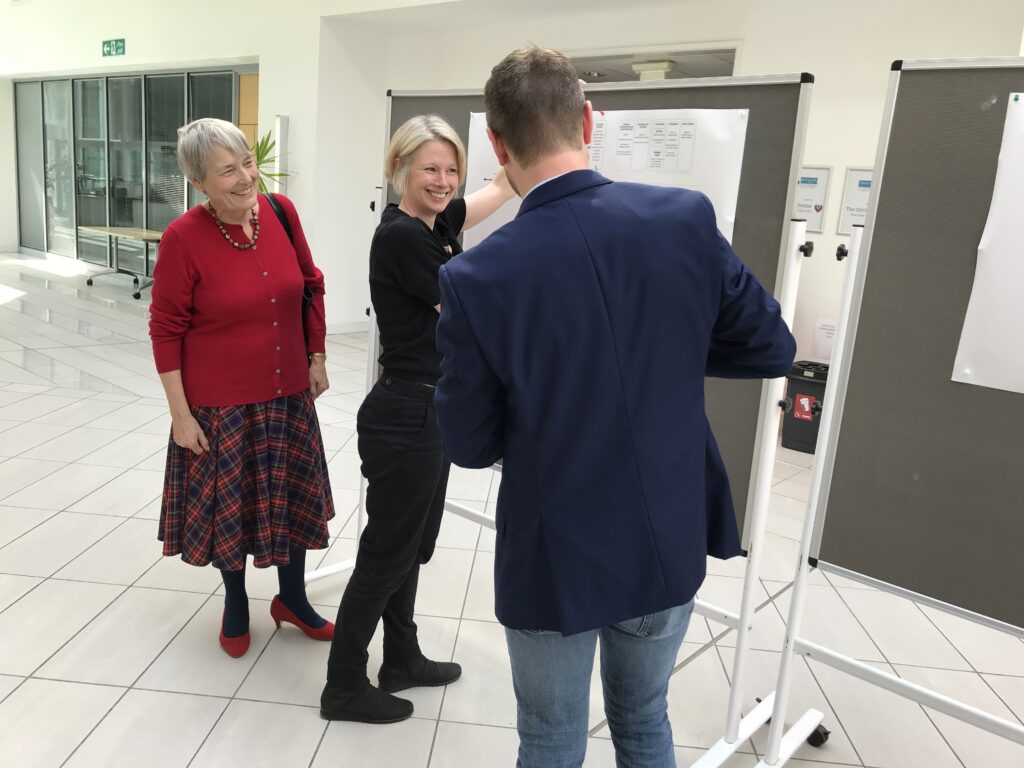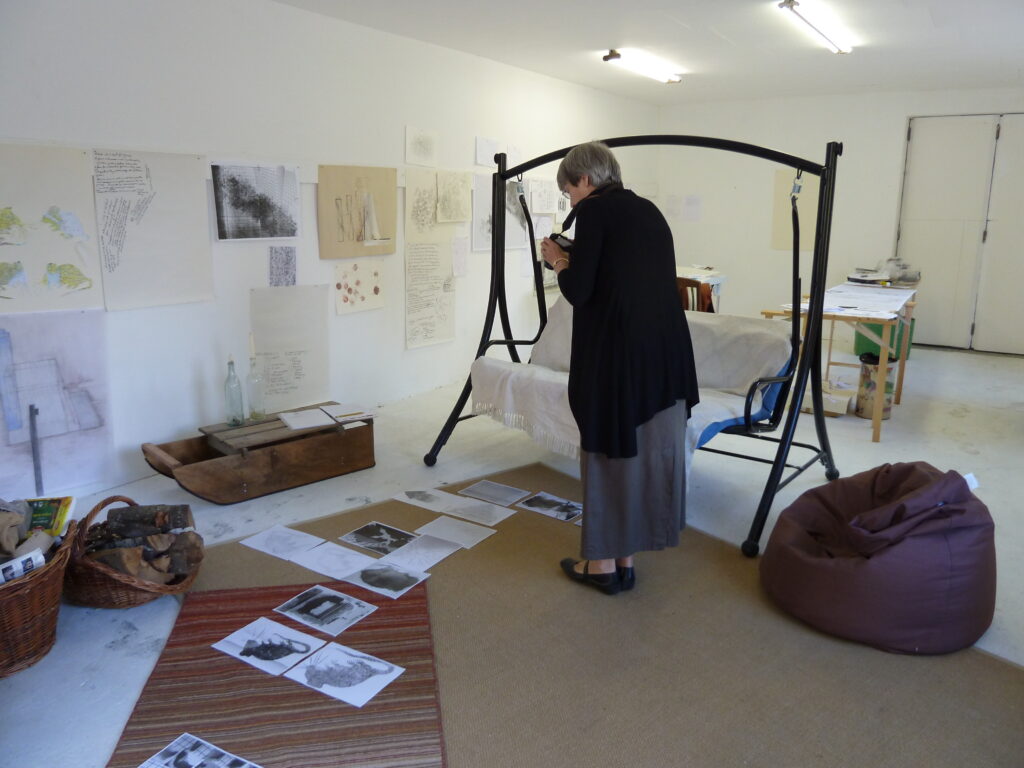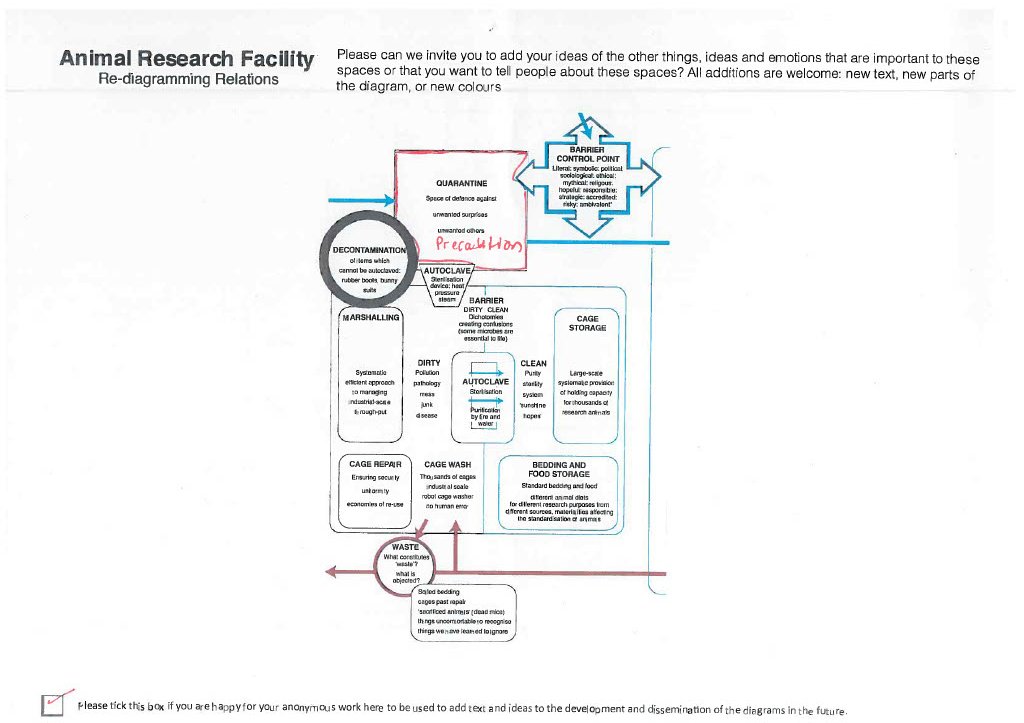Since its creation, Micespace has functioned as a site to develop new kinds of collaborative conversations, in person and in print, about what it means work within the spaces and concepts presented here.


Workshops
We have been privileged to present Micespace at events involving those who care for animals used in research. In workshops, we invited the people who inhabit these spaces on a daily basis to amend and add to the images Helen has created. At some events, participants were encouraged to take handouts featuring extracts of the annotated diagrams and add their own words or introduce personal colour to the black and white images. On other occasions, attendees generated diagrams of their own work spaces, allowing them to place their experiences in context and reflect on their relation to others.
Writing on these diagrams, which were both familiar and strange, supported reflection on different encounters. Spaces are shared, but meanings may not be. Micespace provided a way for people to identify the different spaces where they might express excitement, disappointment, or frustration, and where they could not. People diverged in these. For some, the mood of the recovery room after surgery was green and calm, for others red and anxious; it could be a space of both warmth and fear. Sharing their insights enabled people to explore experiences around the complexities of care in radically new ways.
We reproduce a few of these images below, with people’s permission, and invite others to download Helen’s laboratory charts and experiment to see what new understandings might emerge. Helen’s work can be shared and adapted via a CC BY-SA licence. The images below are not available for reuse by others.
Writing
Our active collaborations have now come to an end, but the work continues to inform our ways of thinking and writing. This conversation been Gail and Helen was recorded for the Knowledge/Value seminar series on Data Infrastructures and Archives in the Biomedical Sciences at the University of Chicago Center in Beijing in September 2012. It later formed the basis for the chapter ‘Diagramming’, written by Gail Davies and Helen Scalway, for the Routledge Handbook Routledge Handbook of Interdisciplinary Research Methods, published in 2018.
Helen Scalway continues to follow the multiple trajectories of thinking about space and direction in science, including in her paper The Arrow as Icon. In this writing, she travels around the questions raised for the constitution of ‘knowledge’ by the loaded and vexed icon of the arrow, as it is often unthinkingly and reductively used in graphics software.
Jordan Sheridan has written his independent reflections on this collaborative work in the article, Postgenomic witnesses: mutant mice, model organisms, and the anti-archive of corporeal equivalence in micespace.org, for Angelika: Journal of the Theoretical Humanities. In this, Jordan writes: Functioning as a mock-mutant mouse repository, Micespace.org disrupts narratives of transgenic mice as uncontested scientific objects that bear and bear witness to human disease. Micespace.org uses speculative visualization to allow us to witness the institutional spaces of the postgenomics laboratory where the bodies of mice are transformed from biological beings into scientific data, from animals to scientific objects.













